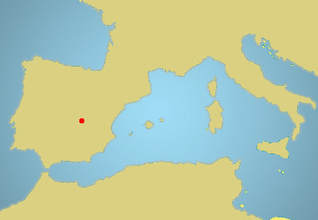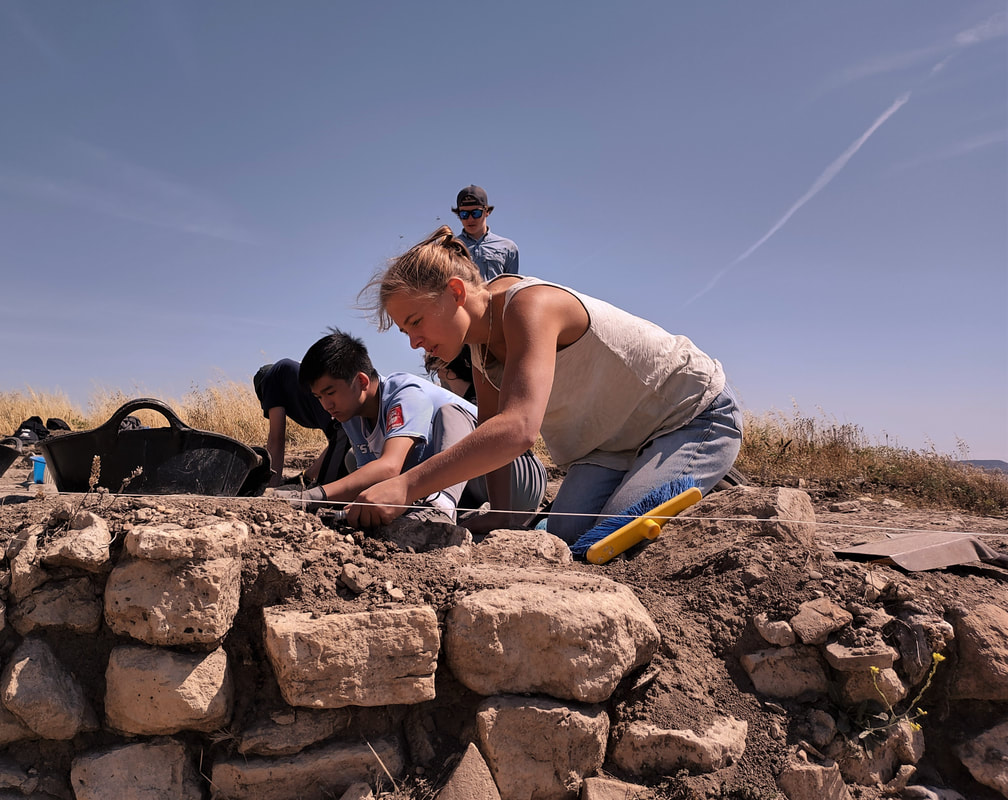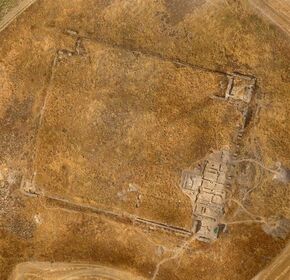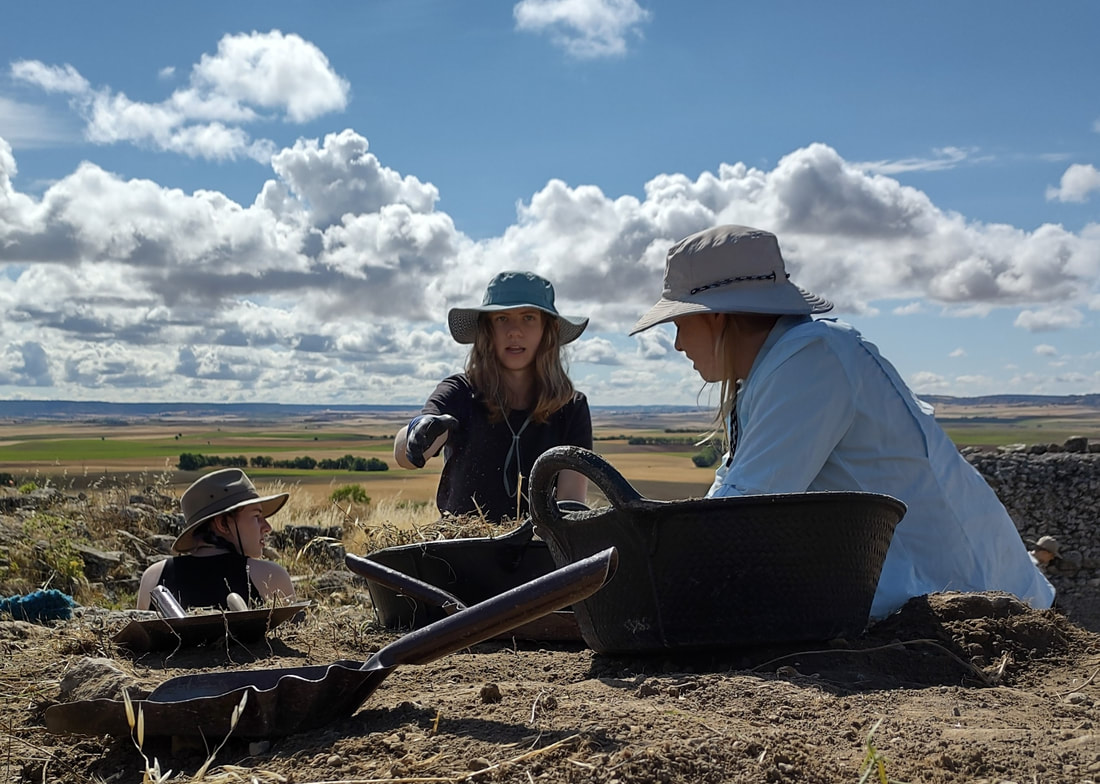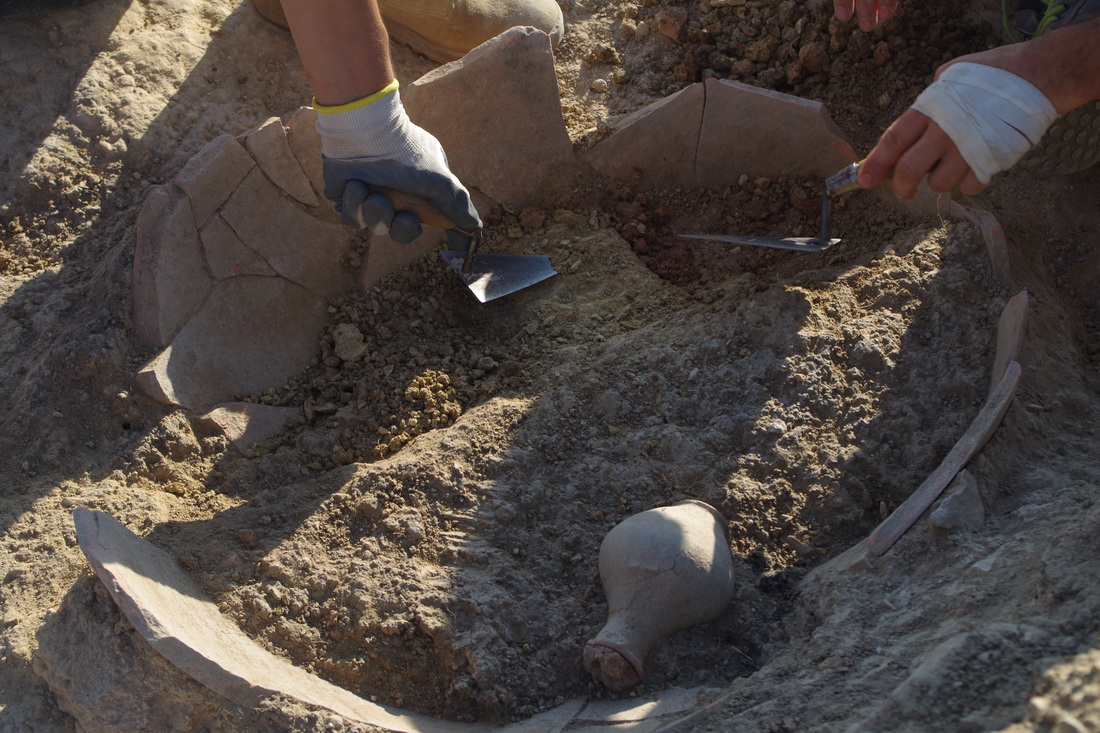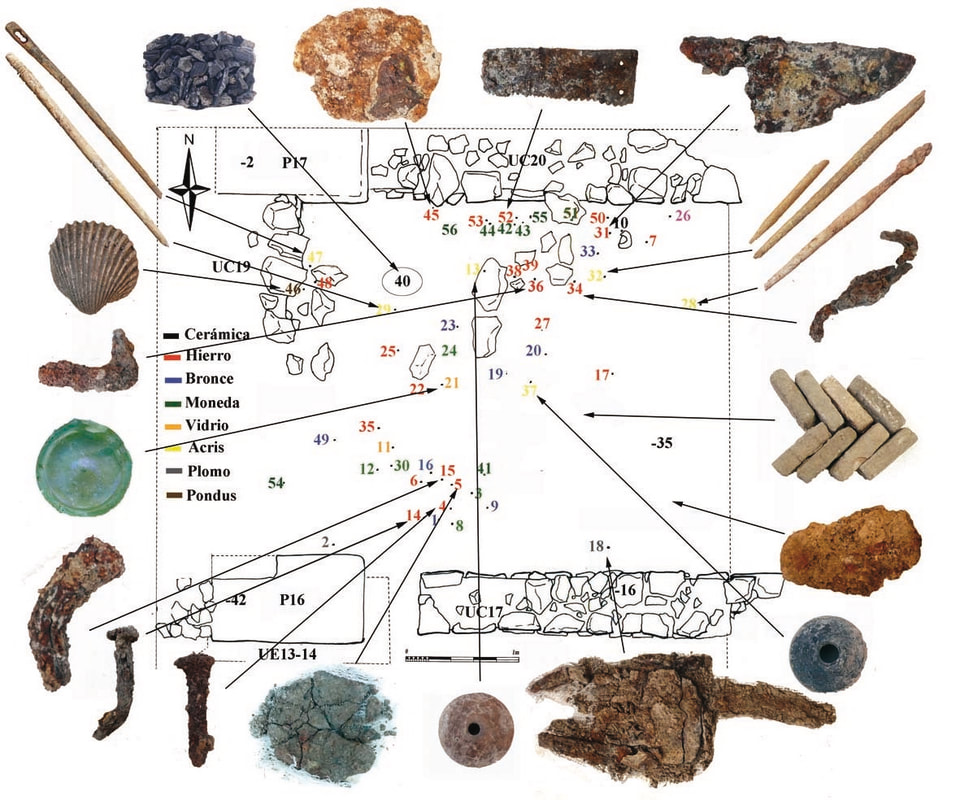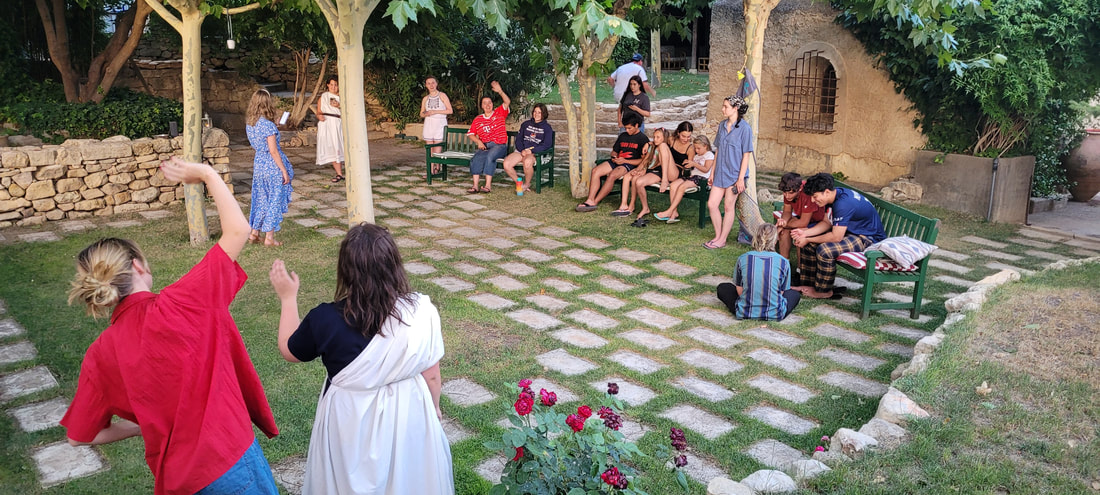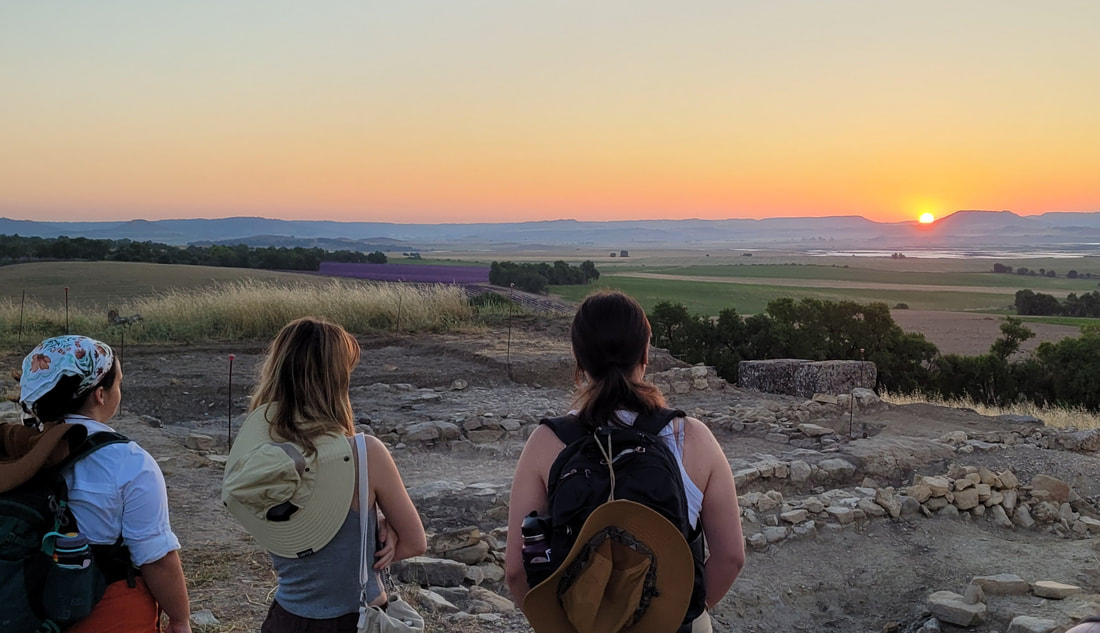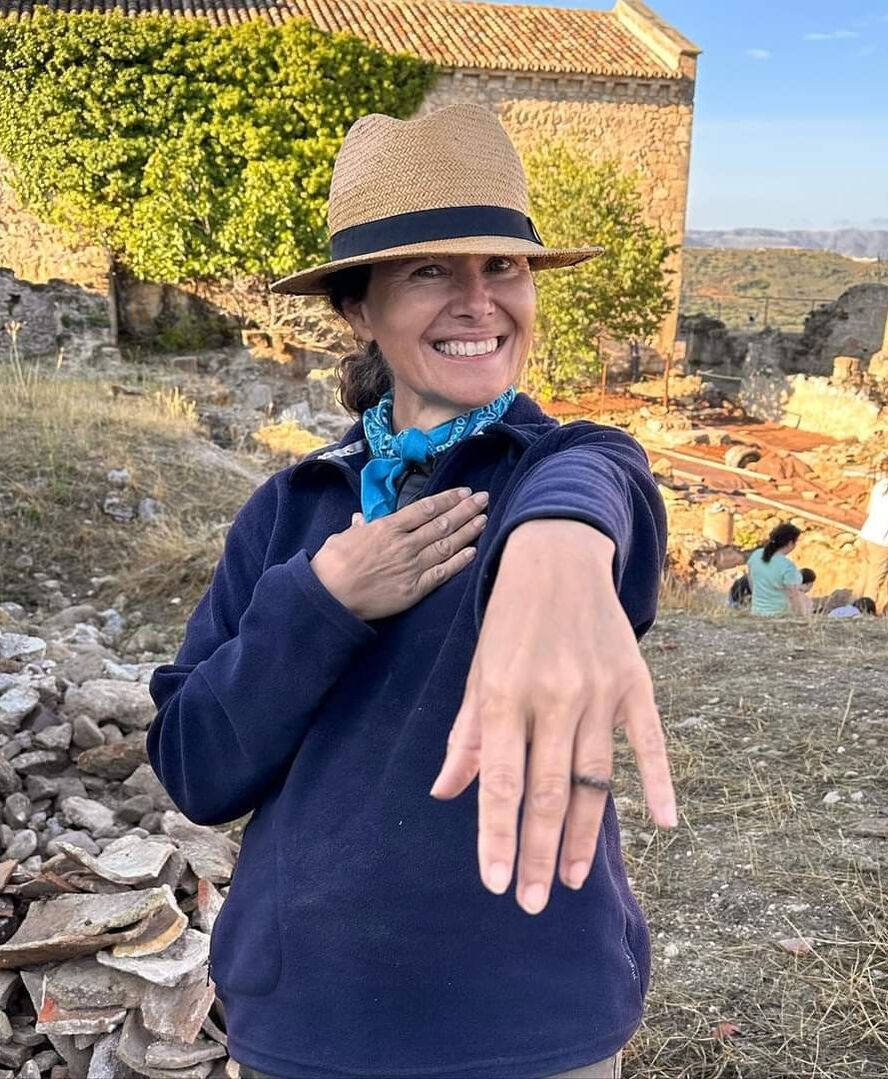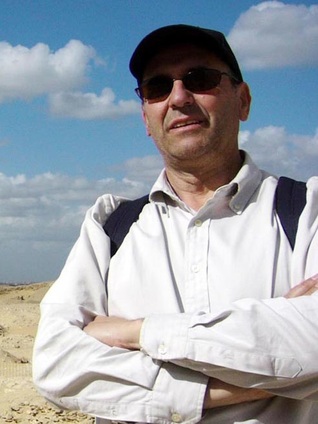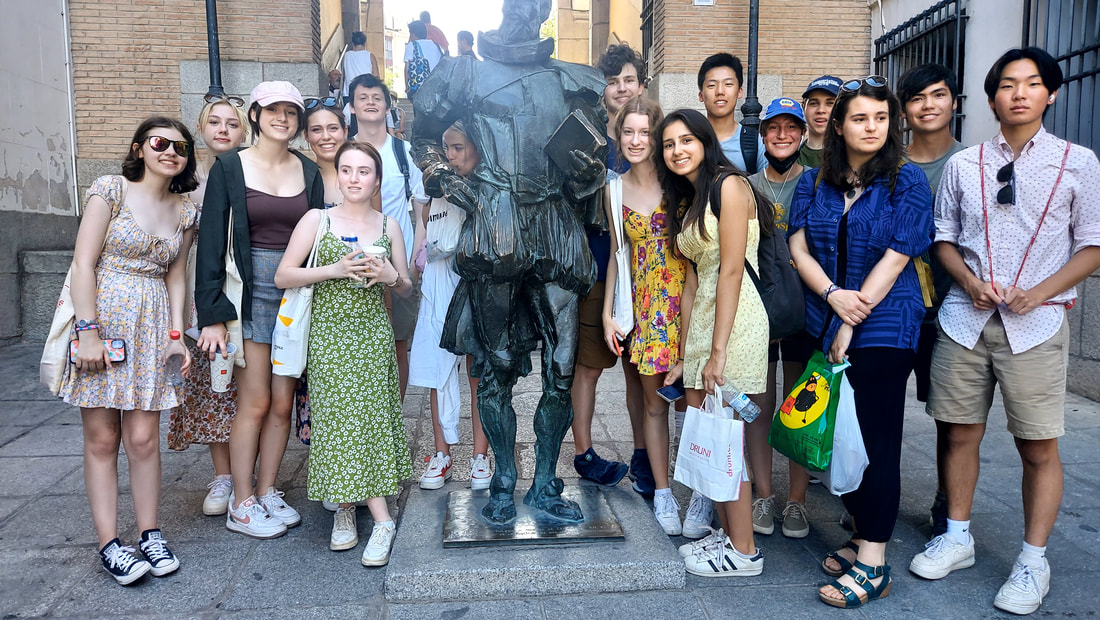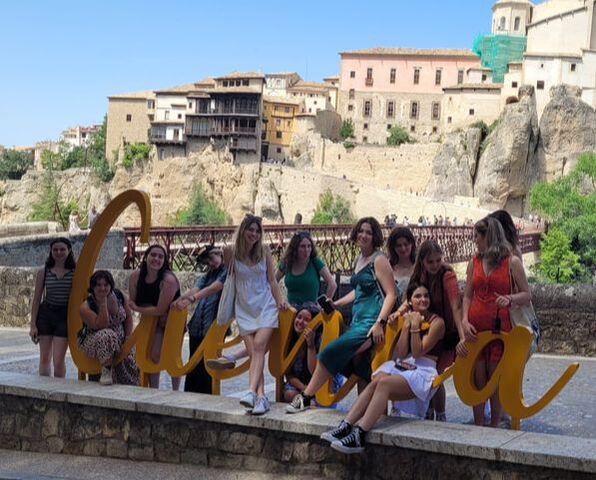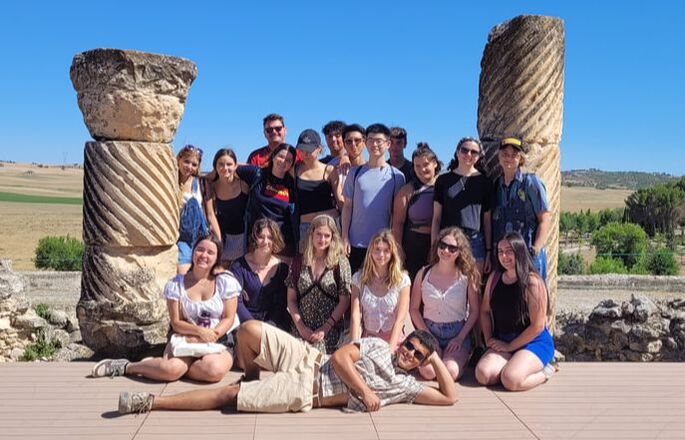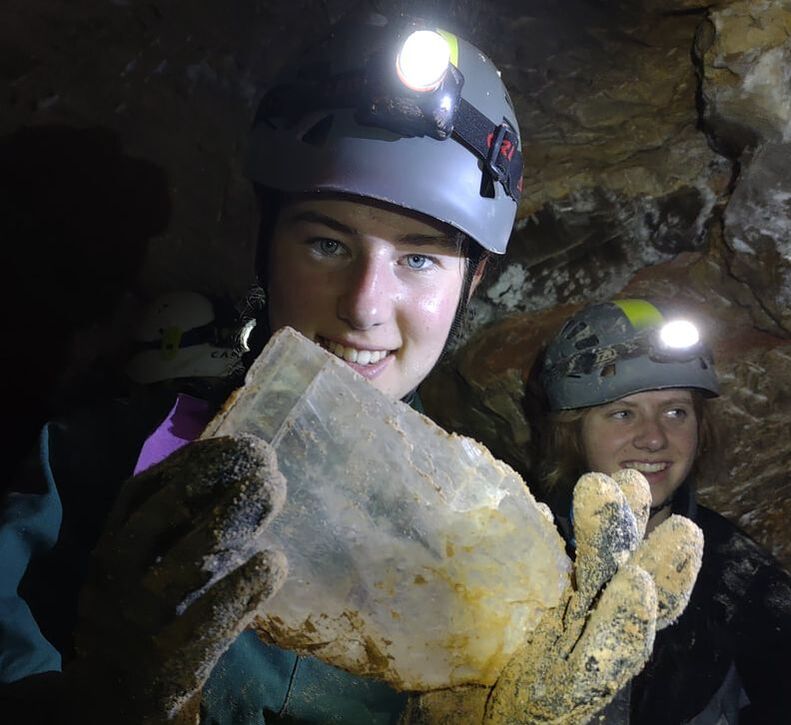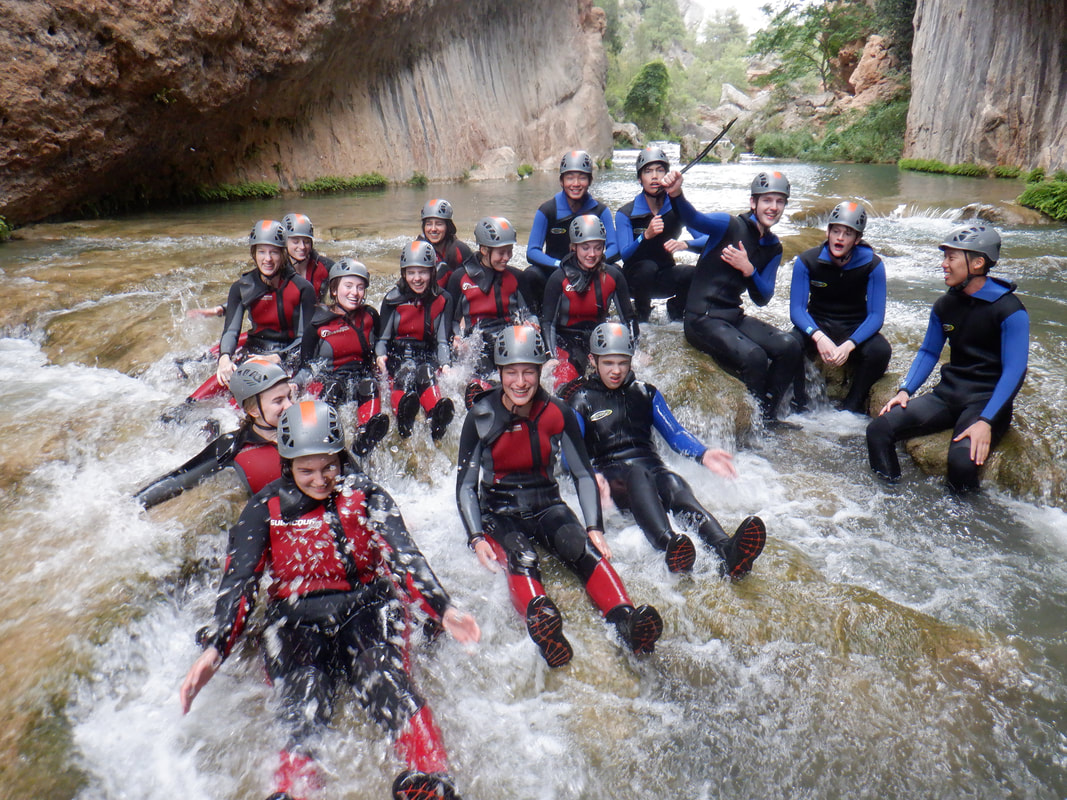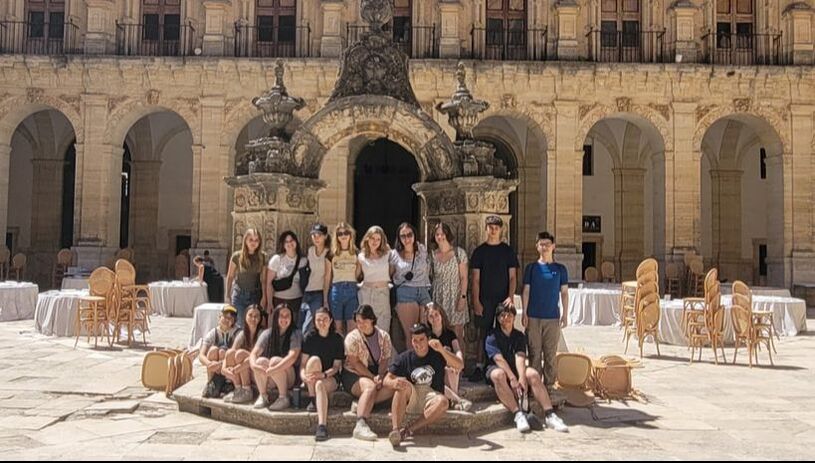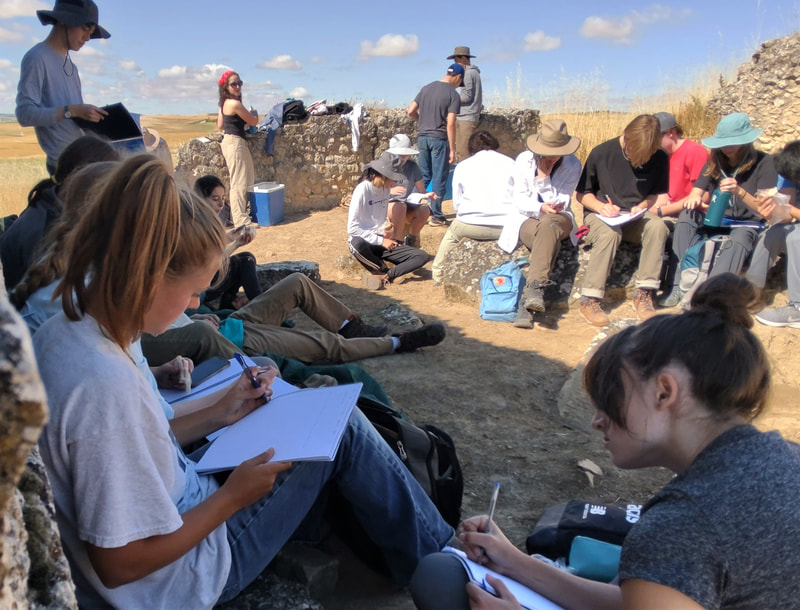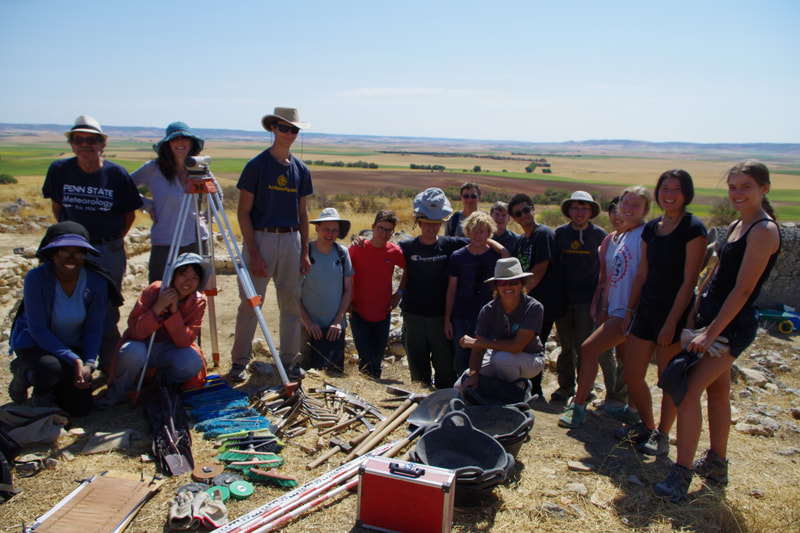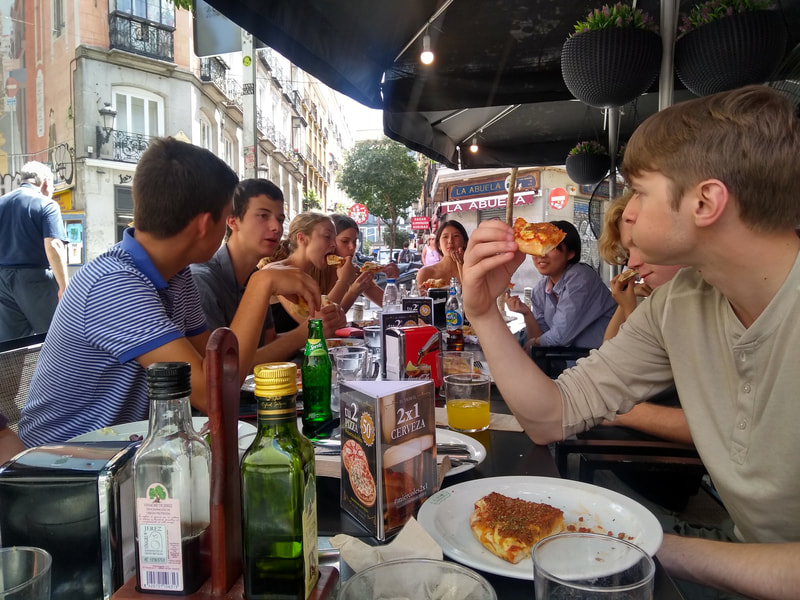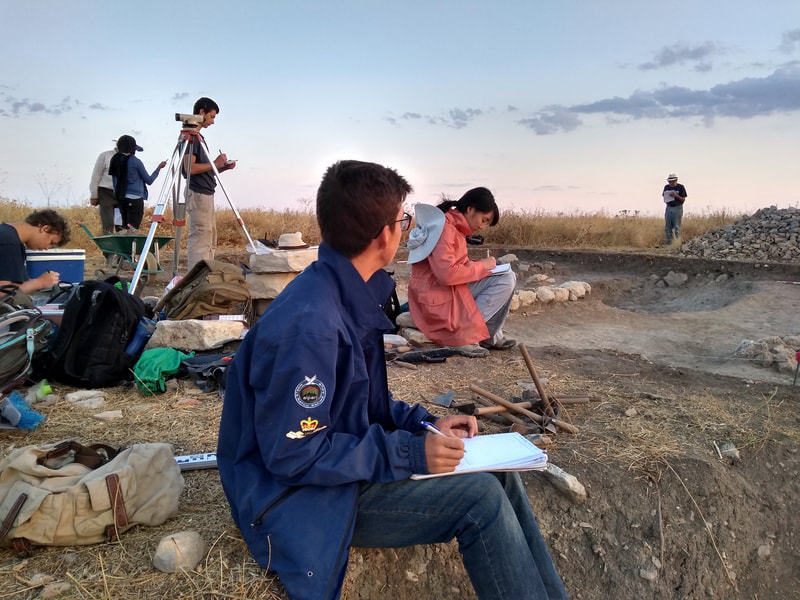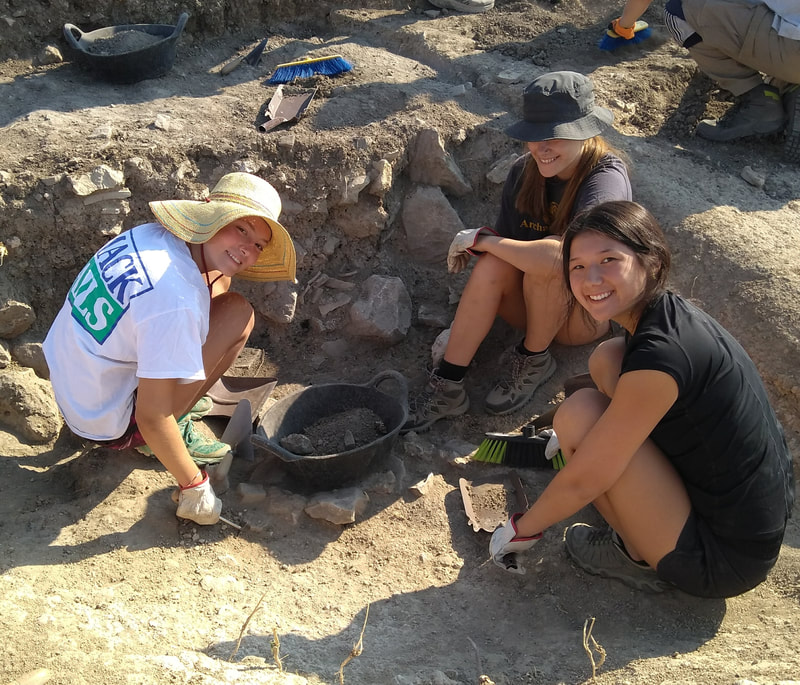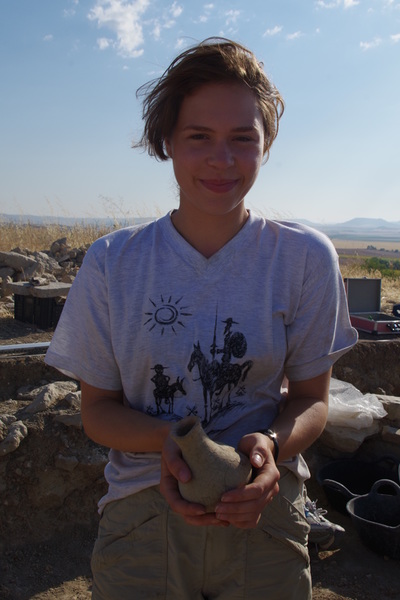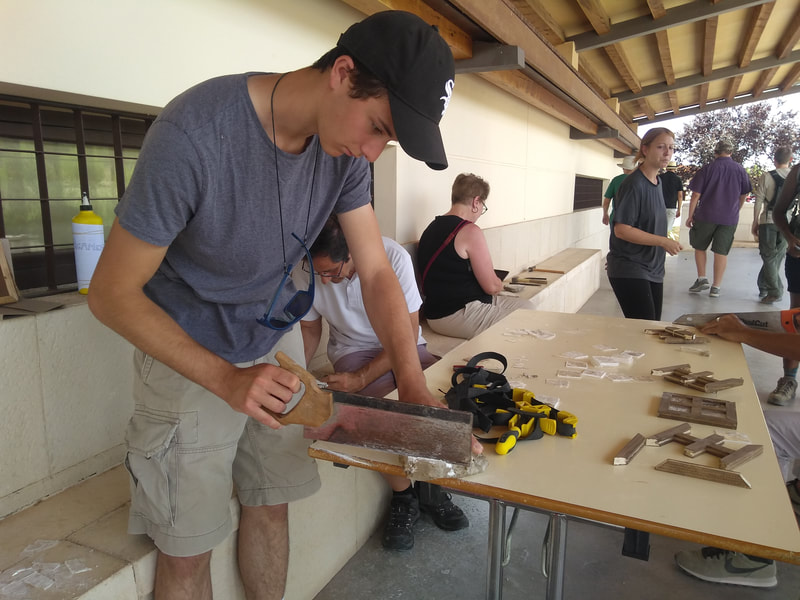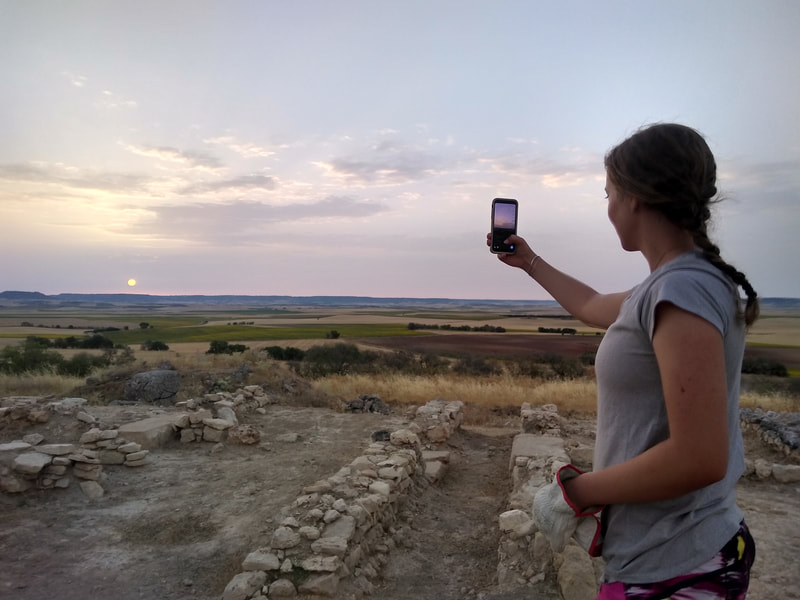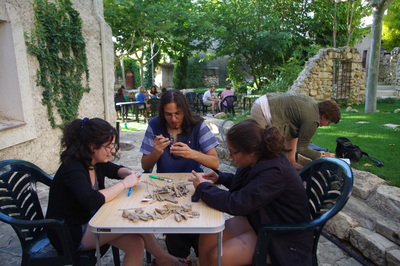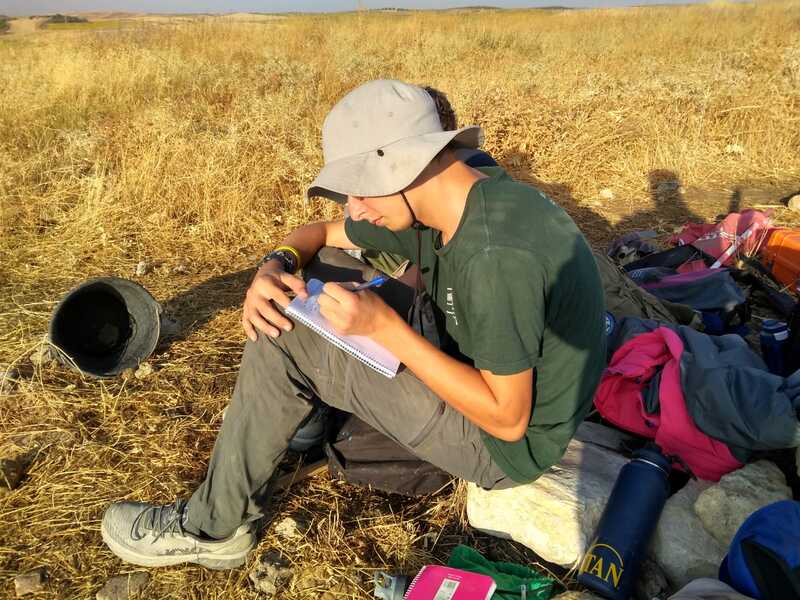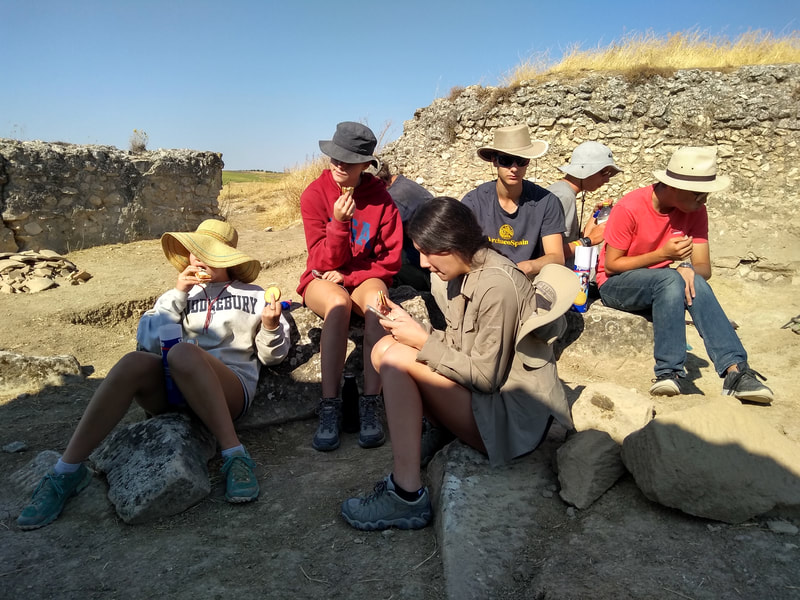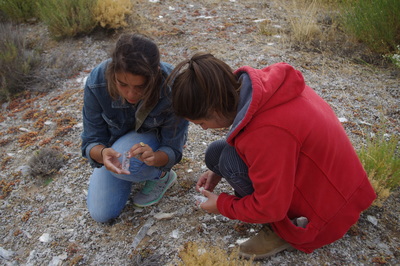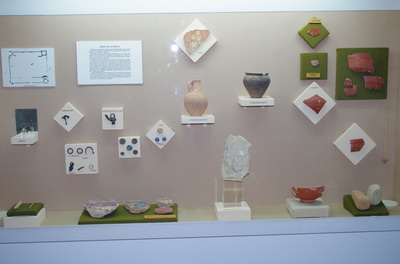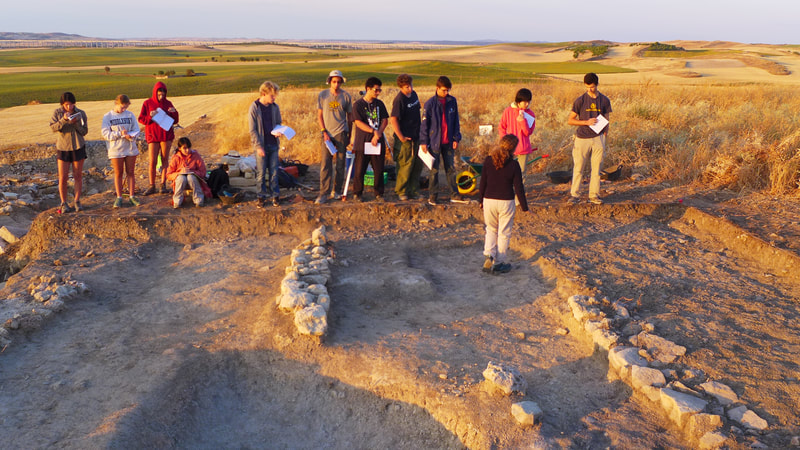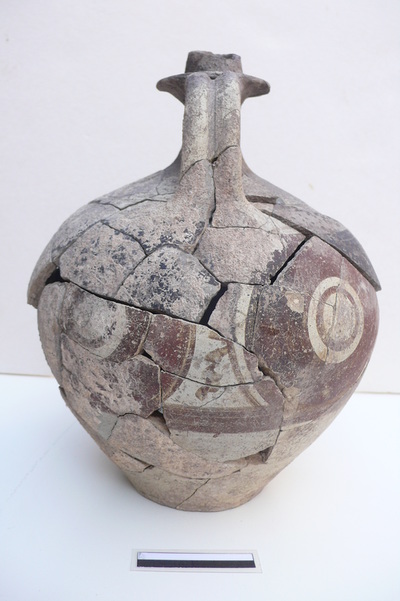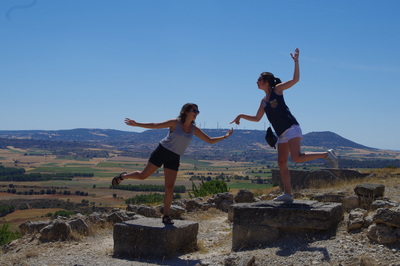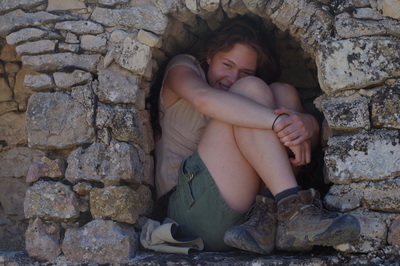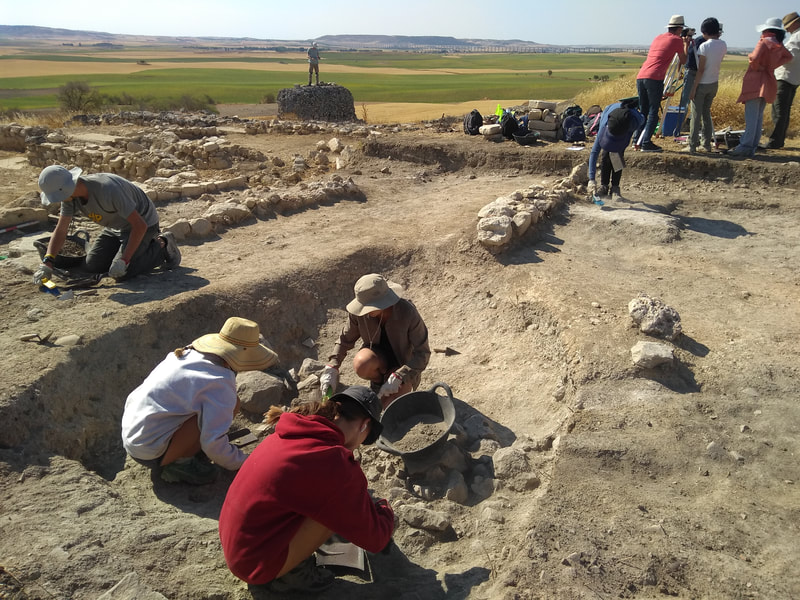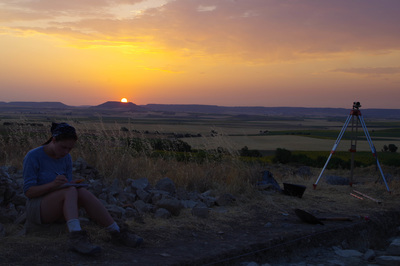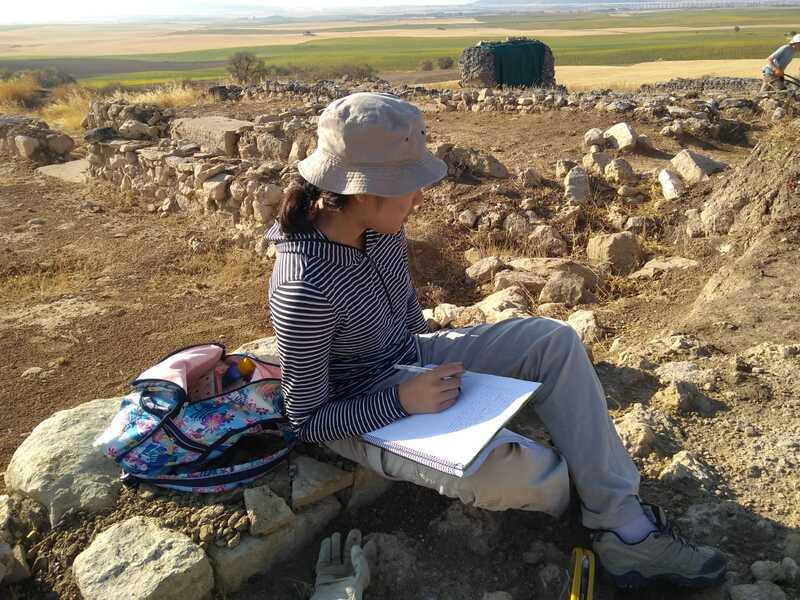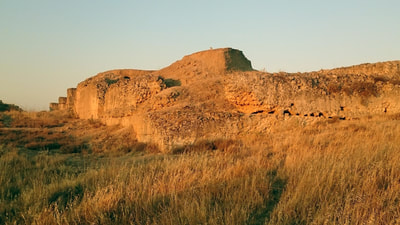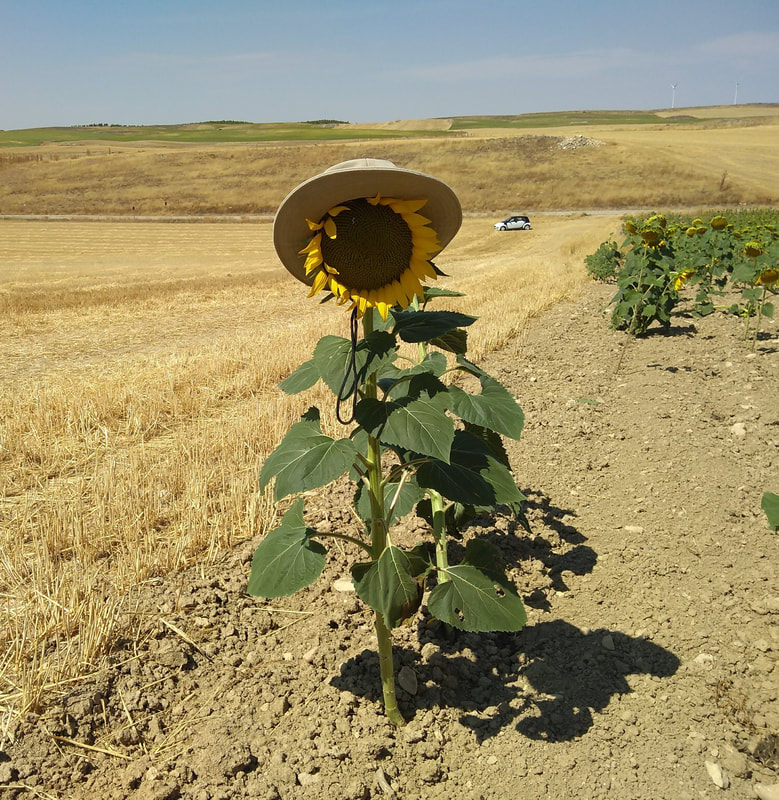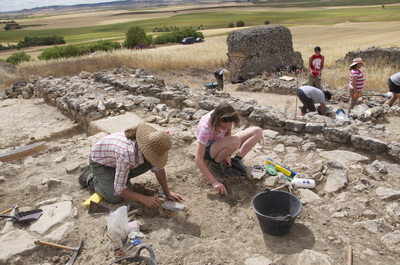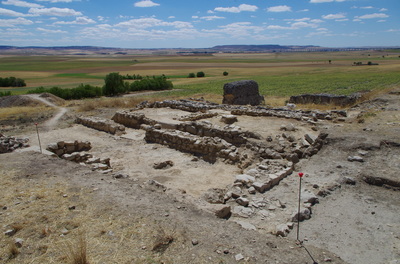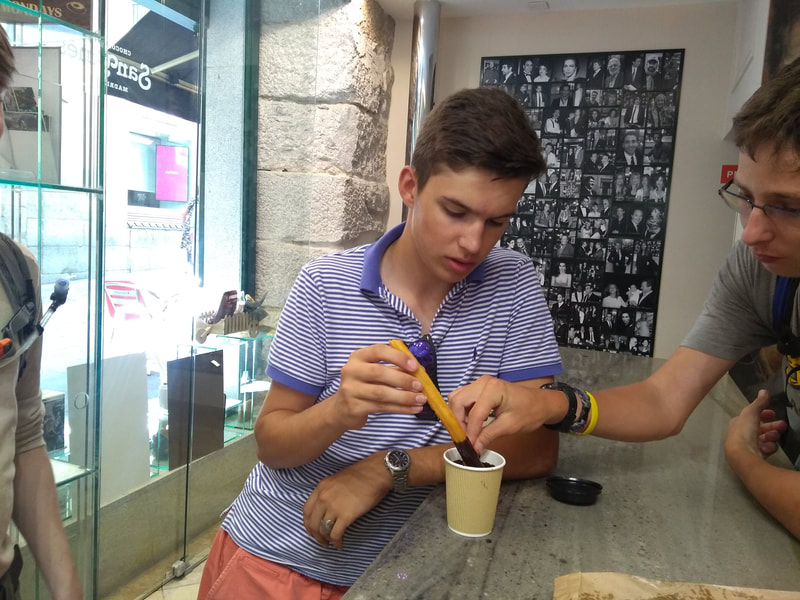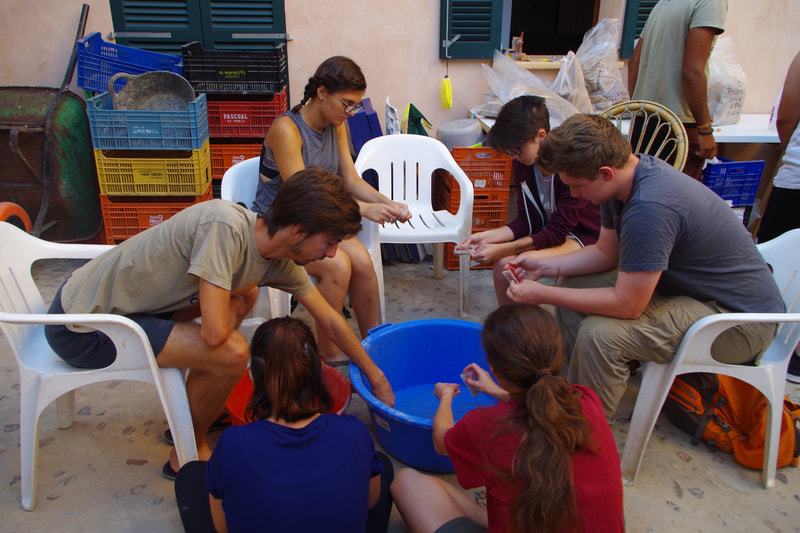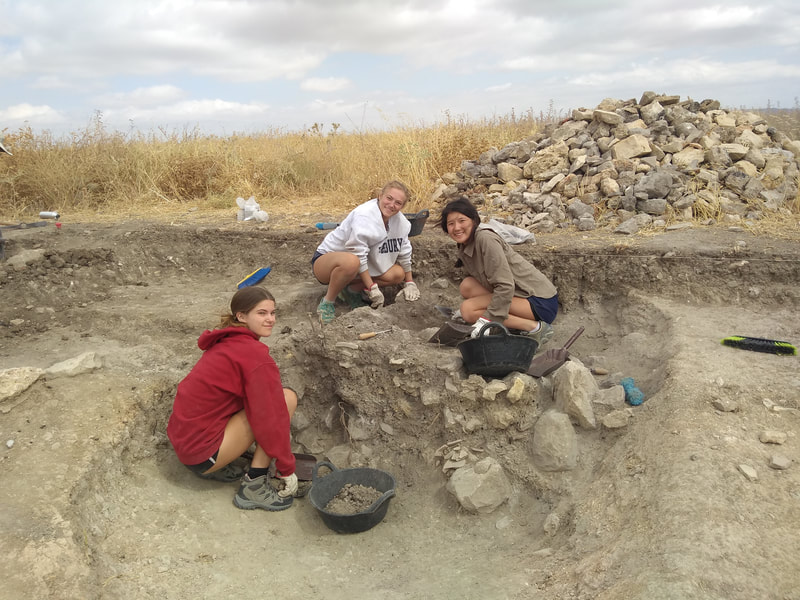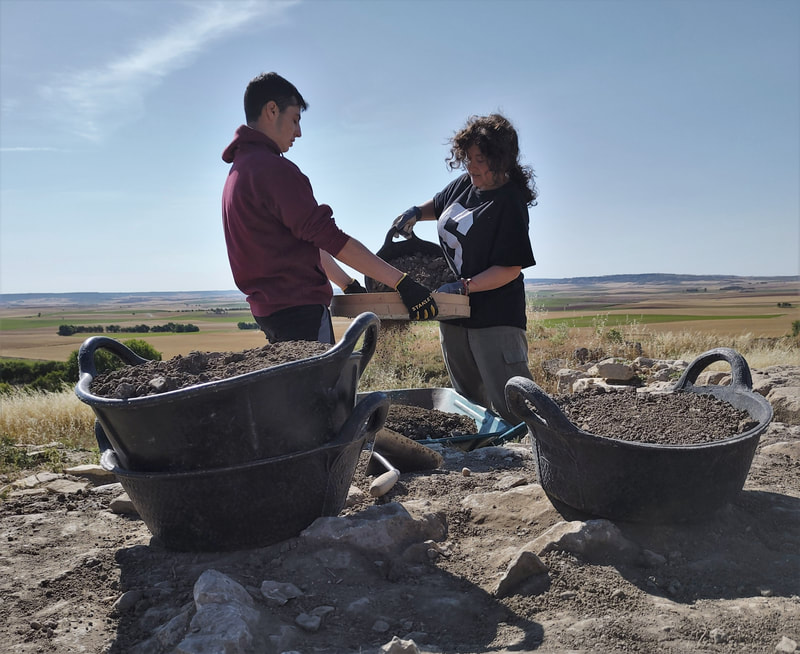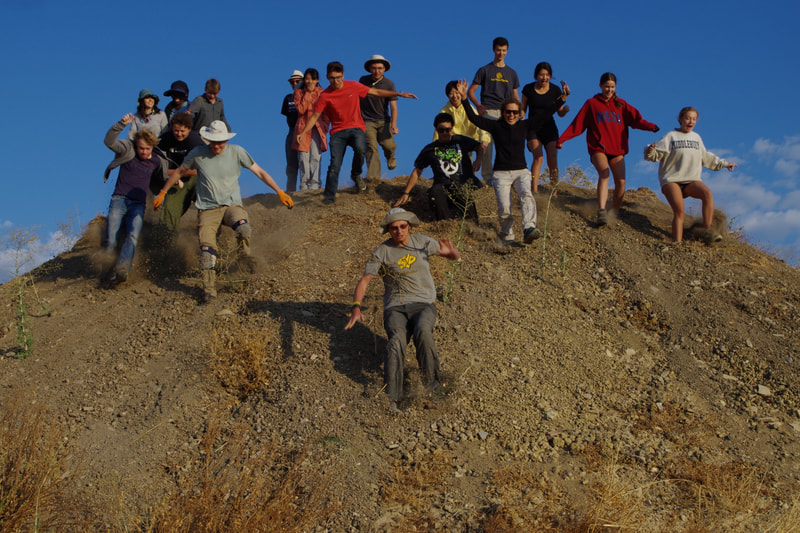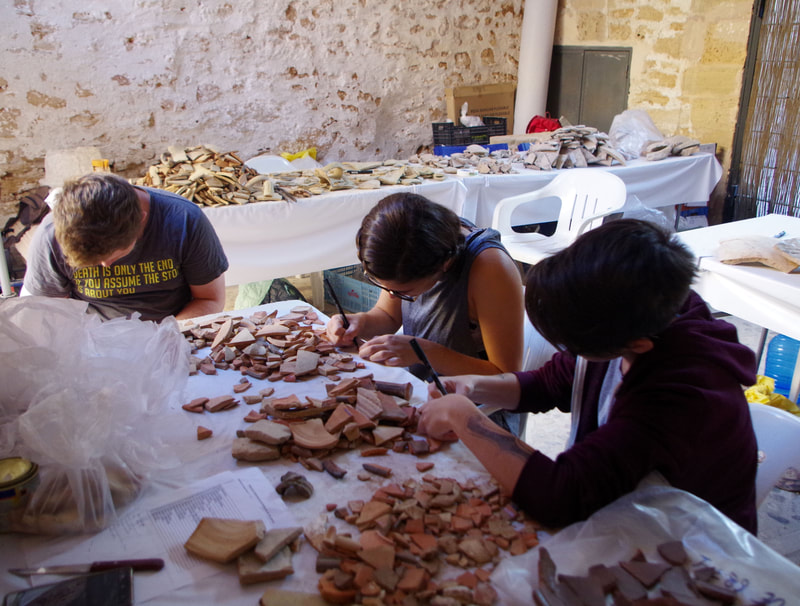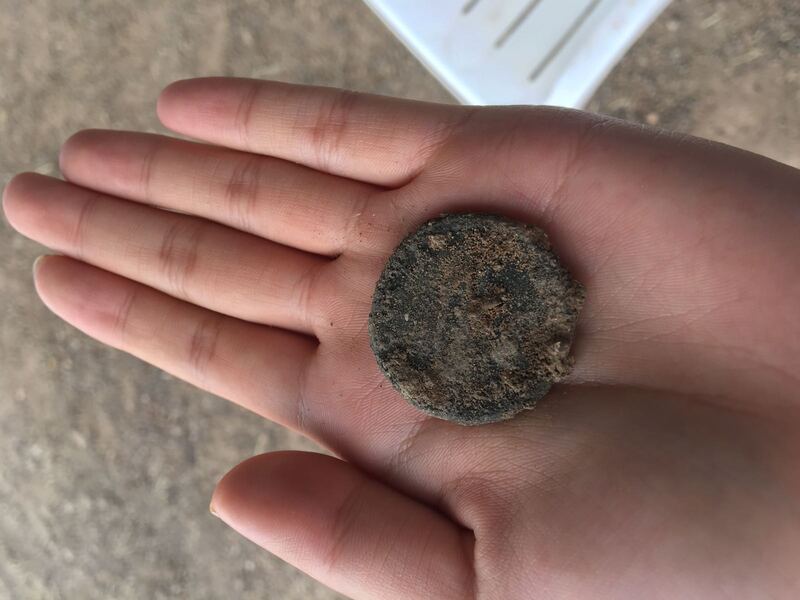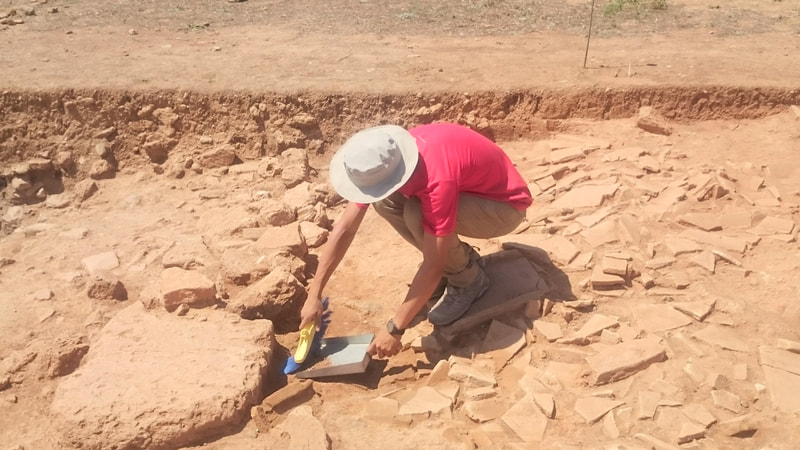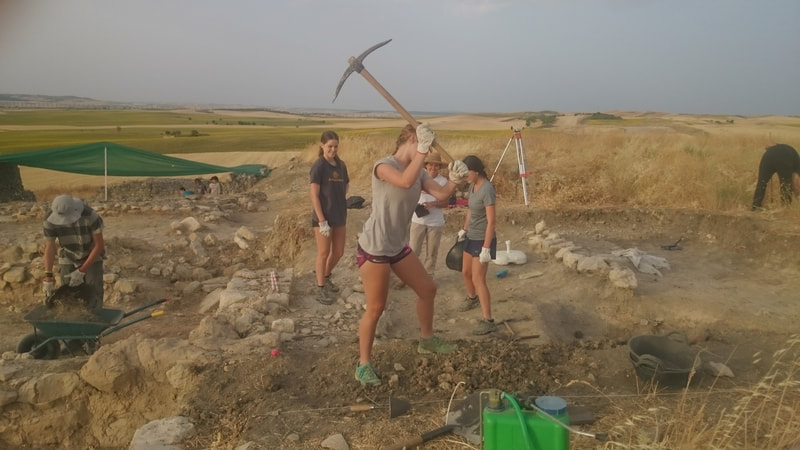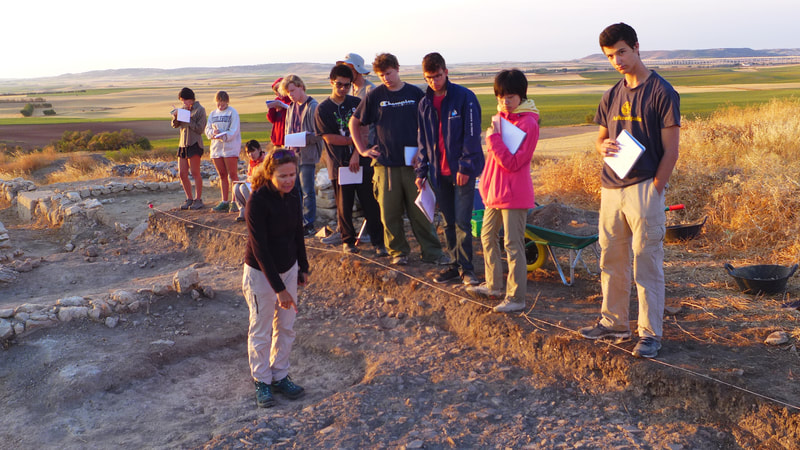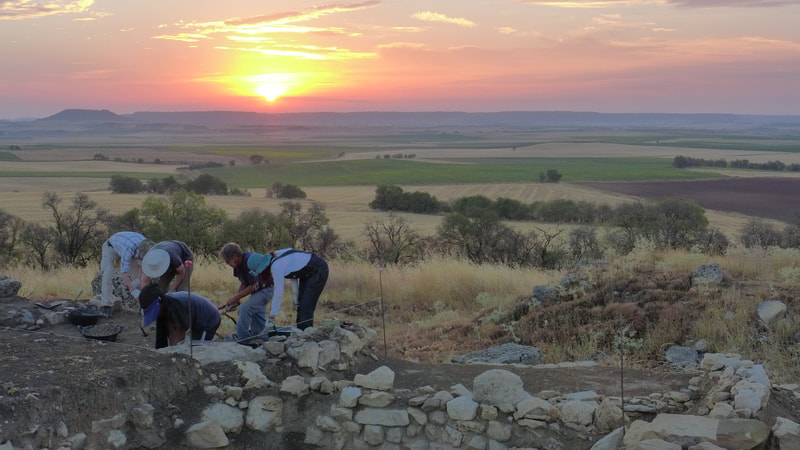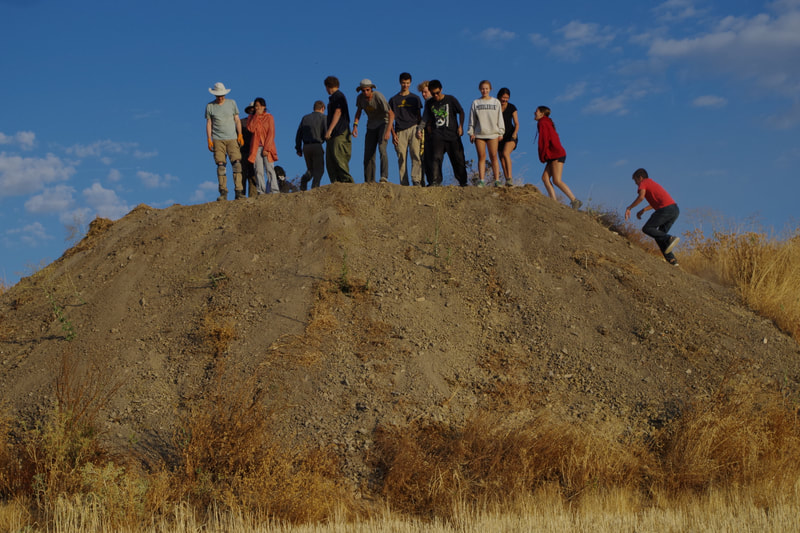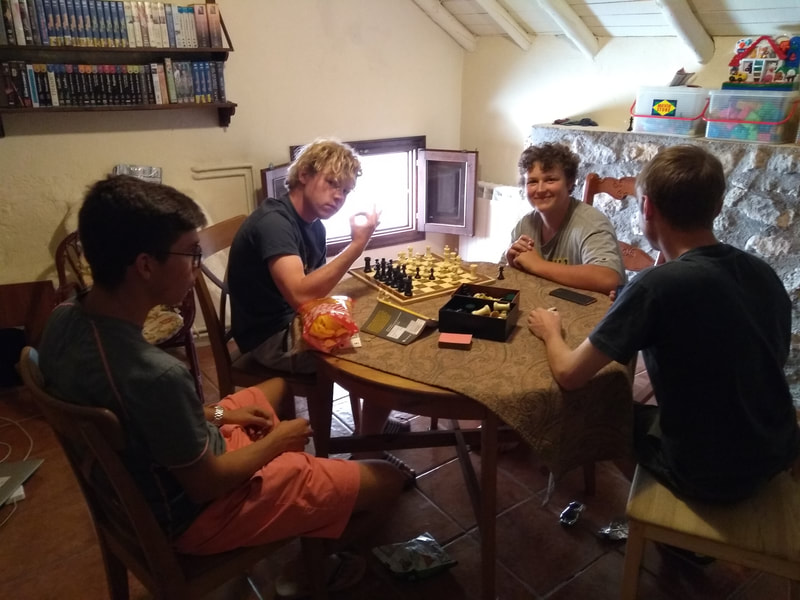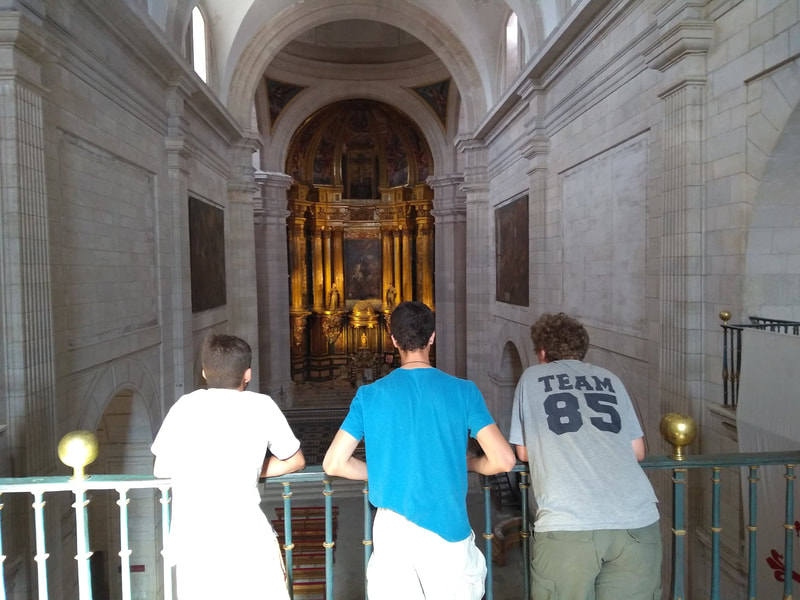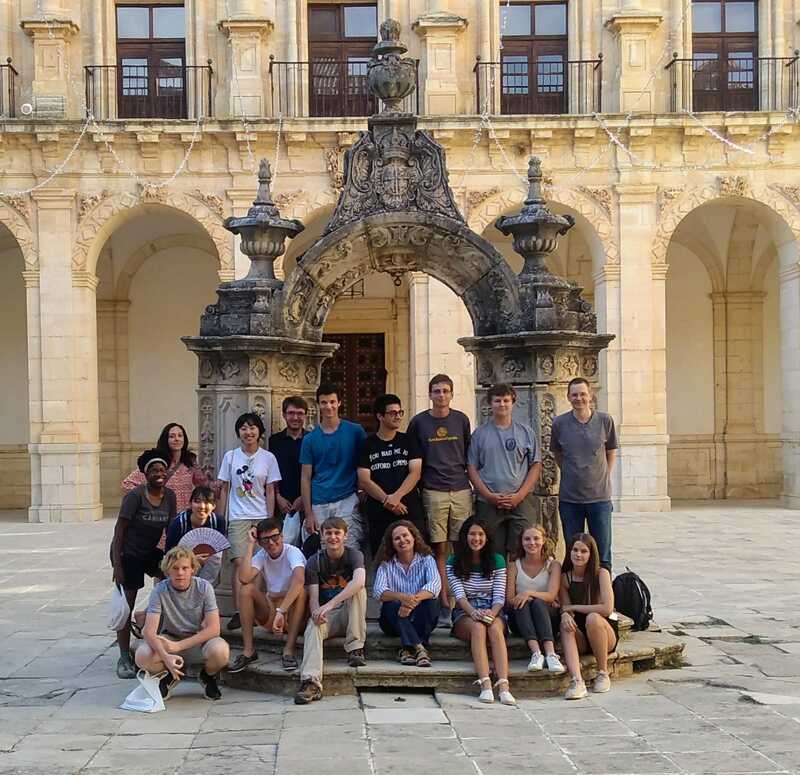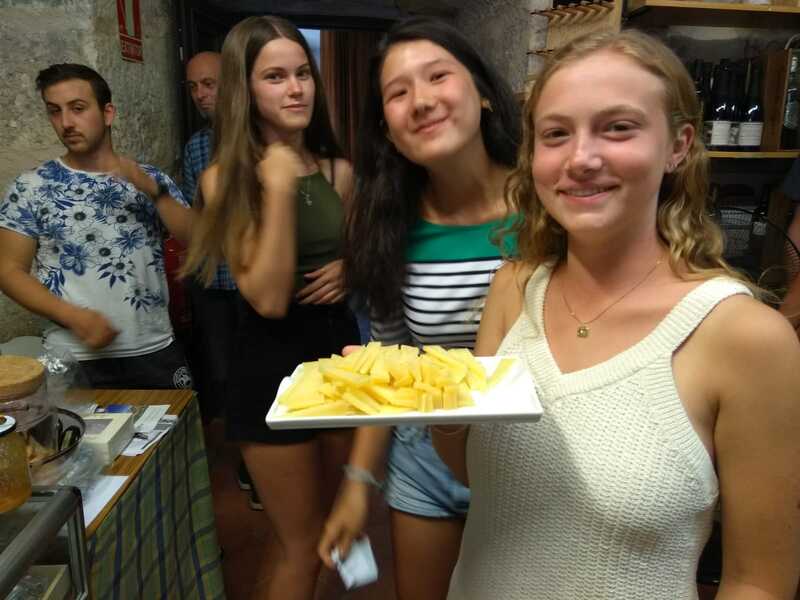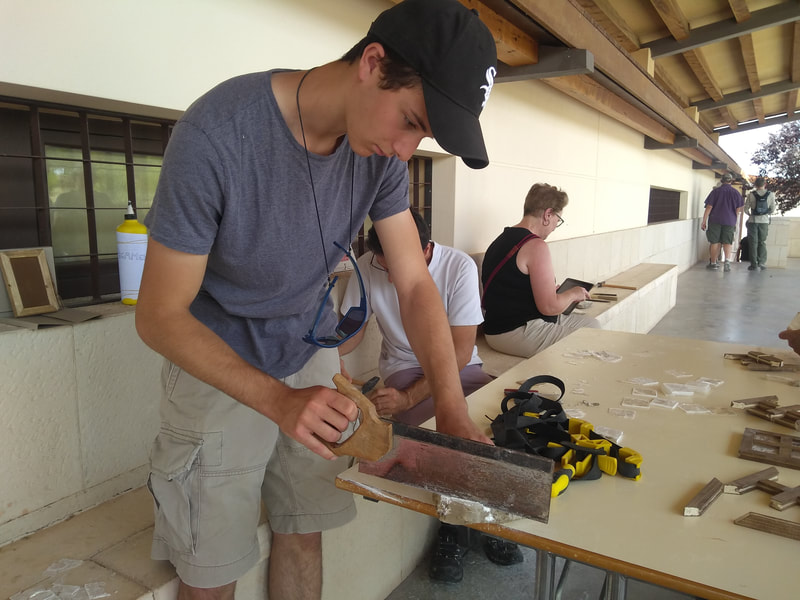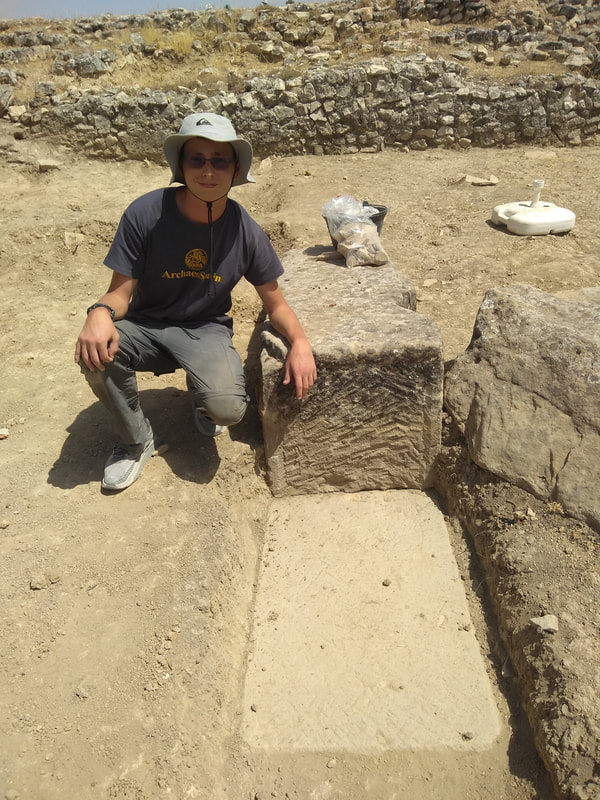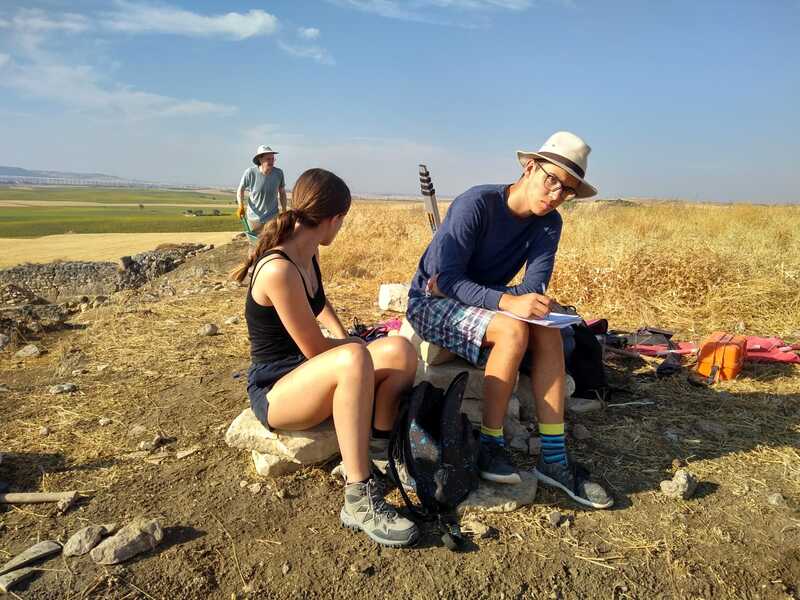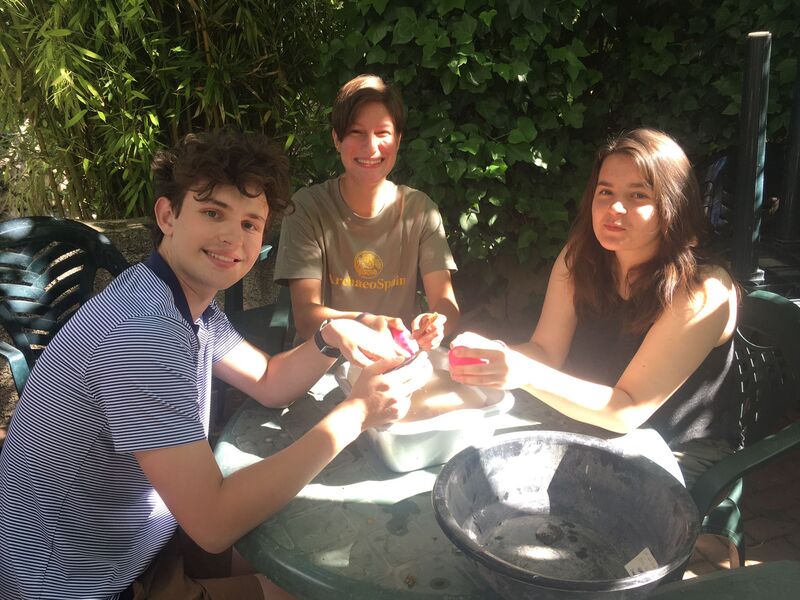|
|
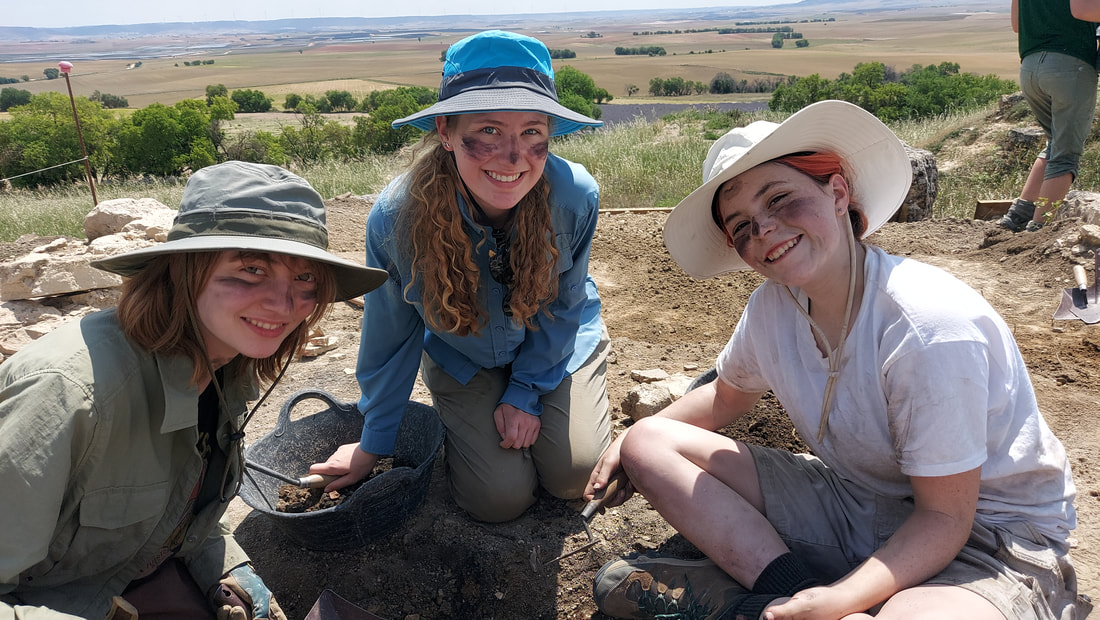
While working as field crew along professional archaeologists You will be learning the methods and techniques of an archaeological excavation, using tools, working with stratigraphy, using record sheets and writing down an excavation journal. Collecting, cleaning and classifying different artifacts will be part of your daily work as well as drawing structures and archaeological finds. ArchaeoSpain High school programs celebrated its 20th anniversary in 2023. We are very proud to have some of our former students among our colleagues, in and out AS team.
At the sides of the building were long structures 12m wide that could have been originally divided, or not, inside. Both the height of the preserved walls as well as the remains of pavement found between the collapsed walls indicate the existence of two stories for the long rooms or alae and even three for the towers. We ignore for now the layout of the central space of this building.
Roman Fortress is known for the excavations that took place on the 70s, led by Professor M. Sadek of the University of Guelph, Ontario, Canada. Thanks to those works the large building with four towers was discovered, although researchers could not determine when or what might it have been built for. In 1973 the excavations were abandoned and 40 years later we return to the site trying, with modern techniques, to understand the reasons that led to the construction of such an exceptional structure and the historical context in which it was made.
The Excavation Project is conducted by ArchaeoSpain directors and licensed by the Directorate General of Culture of the Ministry of Education, Culture and Sports of the Regional Government of Castilla/La Mancha, Spain. excavationThe main goal for this new season is to deep into the knowledge of the building plant that will help understand its main function. Why it was constructed here and when? No similar buildings have been found in other areas of Spain. This area: surrounding the roman city of Segobriga, has something unique that can also be related with the existence of a special construction of this size: the highest number of lapis specularis mines known throughout the Roman Empire.
The lapis specularis or speculum is a type of crystallized gypsum very abundant in the area, which was exploited profusely (almost fifty mines are known near Roman Fortress Pulpon site) during the first century AD. It was used as the first crystal for windows in History. A valuable and expensive material in its time, that brought economic prosperity to the city of Segóbriga and its territory. The excavation will be focused on the investigation of a massive building that could have served as a military garrison, as a horreum or as a place to store lapis specularis, the first crystal known to be used in windows (Plinius. Nat. Hist. XXXVI, 161). The massive building could have served as a warehouse to store the food, tools and equipment for the workers of these mines. The presence of a small military post would be justified to ensure the security of the supplies. In this case the big building could have represented something similar to the headquarters of the mining district of lapis specularis around Segóbriga. By 2024 excavations will continue on the east wing of the great building. In this section, an interesting late Roman settlement has been detected that uses the pillars that served as support foundations for the great building, as reinforcing elements in the corners of the rooms. After the excavation of 20 rooms, the aim is to complete the work in rooms E12 and 13 and E25 and 26, as well as the investigation of rooms 14 and 15, which are adjacent to the NE tower. These are rooms of great interest. They have preserved the opus caementicium wall on the eastern side that must have closed the building in its original conception, but has only come down to us in these two rooms. The proximity to the tower will allow us to know the way in which the two interior walls that make up the east and north wings are assembled, something of great interest for the knowledge of the articulation of the towers with the interior of the building.
As in previous years we expect to find an abundant material culture, made up of a large set of ceramics and other elements of daily life such as hair pins, rings, coins and iron tools, of which we already have an extensive catalogue. In recent years, it has been possible to identify some amphoras of great interest to understand commercial exchanges, fragments of walls built with opus spicatum, as well as the remains of industrial rooms such as the E 21 forge. SEMINARS AND WORKSHOPS
Some of the finds in room e20 excavated in 2017accommodationWe will be staying in Jardín de San Bartolomé, a beautiful traditional house located in the centre of the village, next to the church. A 5 minute walk from our head quarters you will find the village swimming pool, that you can enjoy every day after working at the site.
The house was built in 1840 on a garden belonging to the nearby church. It was named after Saint Bartolomew for at the end of the garden was a hermitage dedicated to the Saint. It remained closed for 30 years until its recent restoration. The house stands surrounding a typical Castilian courtyard, covered by a skylight. It has been carefully decorated and we will enjoy its varied common areas such as the library, the dining room, the porch or the large garden. Carrascosa del Campo is a small village located in Cuenca province only one hour drive East of Madrid. It is surrounded by a landscape of small holm oaks between soft hills. The village has a population of 646 inhabitants and its economy is based mainly in agriculture and cattle raising. Its safe environment and its vicinity to historical towns, archaeological sites and national parks makes it the perfect location for our youngest archaeologists. Even if it is a small village, it has several grocery stores, a pharmacy a health care centre, sport facilities etc (if you require special medication, however, we encourage you to bring enough for the time you will be staying with us). By our front door there is a bus stop that connects the town with Madrid and Cuenca. dates & feesSession 1st 10-26 June FULL
Session 2nd 27 June-13 July FULL Session 3rd 5-21 August FULL Program Dates
Program Fees Include:
Fees DO NOT include airfare. PAYMENT PROCESS: To reserve a space, you must pay a $400 application deposit (included in the price of the program). The remainder of the program cost will be due by April 15th. Application fees will be refunded if the applicant is not selected. Application Deadline: Rolling application. We accept applications until all spaces are filled. Cancellation and Refund Policy: -Before March 15th: All payments, except for $100 from the application deposit, are refundable. -Between March 15th and April 15th: Application fee non-refundable. The remaining balance is refundable. -After April 15th: All payments are non-refundable unless your application is rejected by the program director. Travel Arrangements: You can start making your travel arrangements as soon as your application is accepted. We strongly recommend that participants purchase travel insurance to cover all needs including medical, accident, baggage loss, delays and personal liability. ArchaeoSpain is not a travel provider nor is a registered travel agent. Your travel arrangements to and from Spain are subject to the terms and conditions of your travel agency. In the rare event that the program is cancelled, ArchaeoSpain will refund program fees, but is not responsible for non-refundable airline or other tickets or payments or any similar penalties that may be incurred. It is your responsibility to protect yourself against airline and travel agency cancellation fees. Medical Insurance: All ArchaeoSpain participants are covered with an insurance packet that provides medical and surgical treatment and prescription drugs in case of accident or sudden illness. With your program packet we will send you more details regarding this coverage, but you may contact our staff for more information. European students should bring an EHIC card with them. Right of Refusal: ArchaeoSpain reserves the right to refuse an applicant’s selection. This is a rare occurrence and is most likely due to a person’s inability to meet health requirements or in the interest of group compatibility. Once in the field, the program director and ArchaeoSpain reserve the right to send a participant away from the program should that person’s behavior compromise the safety, research objectives and general performance of the group, or violate Spanish laws, regulations or customs. the staffSITE DIRECTORS
If you are part of one of Archaeospain's programs, you agree to respect the archaeological sites and monuments in accordance with the laws of each country, and to accept the code of ethics that does not allow taking photographs of the archaeological sites or of the discoveries made in them. The publication of photographs related to the sites and their findings, especially on social media, need always the prior approval of the directors of the archaeological sites.
excursionsWORLD HERITAGE AND ROMAN SITES
You will have the opportunity to meet different aspects of the Spanish culture at the weekend and afternoon excursions. We will visit the great town of Toledo, the city of Cuenca and its archaeological museum, the Roman city of Segóbriga, the monastery of Uclés and a Roman mine of lapis specularis. There will be some adventure at the natural park of the Cuenca mountains. Toledo declared World Heritage City, is a very unique place. It is known as the city of the three cultures: Muslim, Christian and Jewish. You will have the opportunity to visit some examples like the mosque of the Cristo de la Luz, the synagogue of The Tránsito or the Cathedral of Toledo. We’ll get lost in its narrow streets, have tapas at its terraces and have time for some shopping. Cuenca is another World Heritage city in Spain half an hour drive from Carrascosa. There we will visit the Hanging Houses and the Archaeological Museum, where a large collection of Roman material is exhibited, some of which came from the Pulpon site. The city’s most stunning characteristic is its beauty that recalls the harmony between nature and architecture, and its long history that has left us with a significant cultural and monumental legacy.
The Roman City of Segóbriga was the cultural, administrative and miner centre of a wide area in the heart of Spain. Plinius the Elder called it “caput celtiberiae”. The city was founded by Iulius
Caesar and thanks to the wealth due to the exploitation of lapis specularis mines in times of Augustus, an ambitious program of public constructions began: a great foro, the theatre, amphitheatre, termae, temples, and circus. The lapis specularis mines, Huete and Garcinarro. Lapis Specularis is a kind of selenite gypsum which, due to the size and transparency of its crystals was employed as the first glass for windows and exported all over the Roman empire.
There is not another experience like walking through Serranía de Cuenca. You will find natural resources of incalculable geological value, that look like sculpted cities by fairies and elves, such as "Los Callejones" or the "Ciudad Encantada" in Valdecabras; and the sickles and canyons carved by the rivers Júcar and Escabas. The geography make Serranía of Cuenca an ideal place for practicing nature sports like Canyoning, Vía Ferrata, Kayaking and Paintball
Only ten minutes drive from Carrascosa is Ucles, the headquarters of the medieval military order of the Santiago Knights, with its castle and monastery.
photo archiveapplication | ||||||||||||||||||

